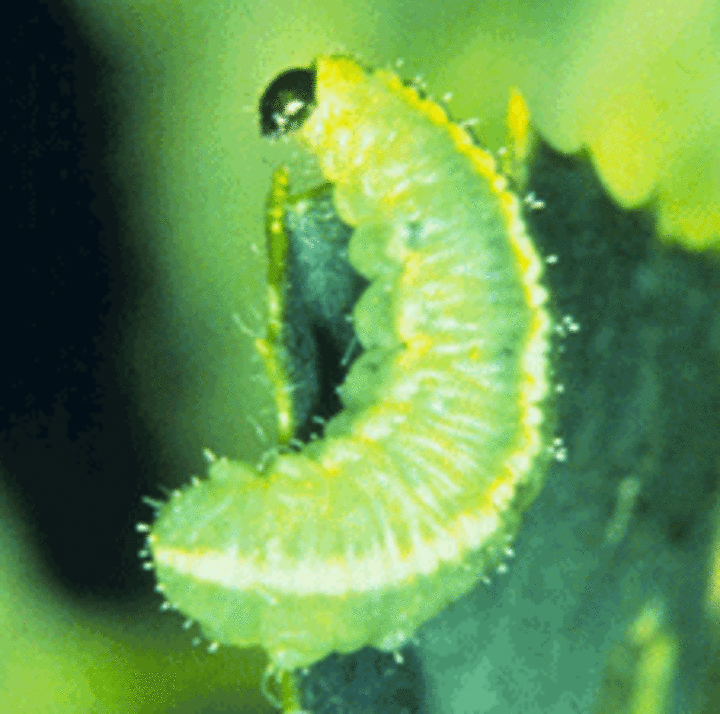Post-emergent Herbicides to Control Weeds in Alfalfa
Spring drought can provide an advantage for weeds in alfalfa, especially in newly seeded fields. Usually, glyphosate applications sprayed on Roundup Ready® alfalfa variety fields can effectively overcome these emerged weed issues, but Roundup® isn’t the only good weed control option for alfalfa.
When weeds grow faster than stressed alfalfa, seedlings are robbed of moisture, nutrients and light. Left uncontrolled, weeds can then thin stands, weaken plants and lower yields. For broadleaf weeds, mowing may be an option while the alfalfa is growing slowly. Adjust mowing height so several leaves remain on the alfalfa seedlings after clipping to aid in alfalfa regrowth. However, if mower clippings may smother young alfalfa seedlings, then alternative herbicide(s) may still be your best weed control choice if Roundup® is not an option.
The 2023 Nebraska Extension “Guide for Weeds, Disease and Insects,” publication EC-130, provides response comparison ratings for labeled herbicides. Alfalfa seedling post-emergent include: AIM®; Arrow®; Butyrac 200®; Chateau®; Karmex®; Metribuzin®; Moxy2E®; Poast®; Prowl H²O®; Pursuit®; Raptor®; Select Max®; Sinbar®; Treflan®; Velpar® and Warrant®.
For established alfalfa, labeled broadleaf or grassy weed herbicides include: Aim®; Arrow®; Butytrac®; Chateau®; Gramoxone®; Karmex®; Metribuzin®; MCPA Amine®; Moxy 2E®; Poast®; Prowl H²O®; Pursuit®; Sinbar®; Treflan®; Velpar® and Warrant®. These products are most effective when applied before weeds reach four inches tall. As always, read and follow label directions for application rates and conditions.
Alfalfa Weevil
Spring is in full swing and that means insects will be emerging from their overwintering habitats. Unfortunately, it’s not just beneficials that are waking up, but pests as well, including the alfalfa weevil.


Alfalfa weevils are beetles that overwinter primarily as adults and emerge as temperatures warm and begin to lay eggs. Plant injury from feeding damage initially appears as pinholes in the terminal leaves, with leaves becoming skeletonized as feeding severity increases. It is important to note that in previous years, areas of the Panhandle and northern counties have seen two flushes of weevil larvae. This may lead to increased feeding damage to alfalfa regrowth after the first cutting.
Scouting for alfalfa weevil is critical for preventing economic losses to alfalfa fields and should begin in early May. You will be looking for a beetle roughly 5 mm in length with a blunt snout and a body covered in golden hairs with a brown stripe running longitudinally down the center of the back. Larvae are around 8 mm long with a black head, wrinkled green body and white stripe running lengthwise along the top. Economic thresholds for alfalfa weevil can vary greatly from an average of one to seven larvae per stem, depending on a variety of factors.
Natural enemies of alfalfa weevil, including ladybeetles and parasitoid wasps, have the potential to keep weevil densities below economic levels. For this reason, it is recommended that insecticides be used only when necessary. When alfalfa reaches 50% or more bud stage, it may be more profitable to cut the alfalfa early rather than treat it.
Spring Turn-out to Pasture
The time for turn-out to our primary summer pastures is coming soon. A couple of important questions are what date to turn-out, and which pastures should be first?
The driving factors on the amount of grass growth at a specific date varies each year depending on spring temperatures and precipitation. This spring, March and April temperatures have been below normal and many areas of Nebraska are still at some level of drought. With the potential for ongoing drought, delaying turn-out and continuing to feed hay, if possible, is recommended. This will allow the grass plants to maximize growth given the current soil moisture conditions, and result in greater season-long production.
For mixed cool- and warm-season native grass pastures, it is important to allow the cool-season grasses to reach at least a 3- to 4-leaf stage. Initial grass growth in the spring comes from energy reserves stored in the roots and crowns of the grass plant. Grazing too soon could cause a depletion of those reserves and reduce production because there was not enough leaf area present to adequately begin producing energy from photosynthesis.
When grazing multiple native grass pastures in a rotation, it is beneficial to change the sequence or order of grazing for the set of pastures. This change in the time of grazing each year benefits the overall health and vigor of the grasses. For producers that have both native range and introduced grass pasture such as smooth bromegrass or crested wheatgrass, grazing the introduced grass pastures first is a great approach to use that resource and allows for a later turn-out on the native pastures.

